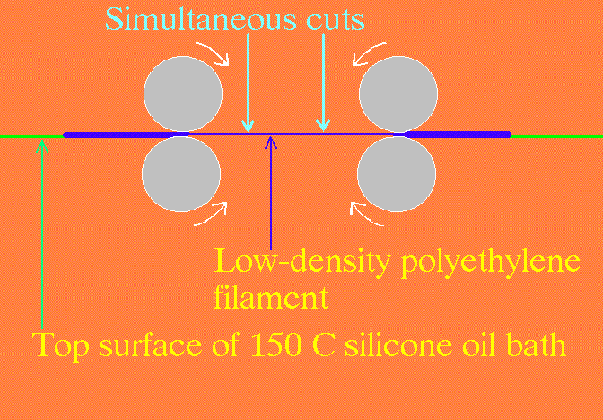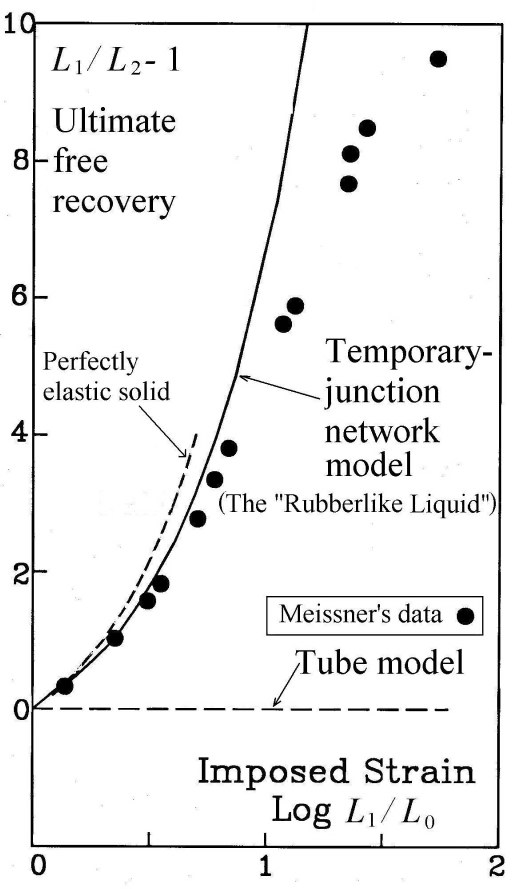Arthur S. Lodge | home
Curriculum Vitae | For Sale: Elastomer Theory | The Editor Regrets... | Science & Religion: Common Features | The First Published Experiment | Science & Religion: Features, not in Common | Types of Scientific Experiment | Evolution | Global Warming | For Sale: Elastic Liquids | For Sale: Body Tensor Fields in Continuum Mechanics | The Lodge Stressmeter | The Educational Opportunity Bank | Compost Temperatures | Pressure Difference Measurement | A. S. Lodge: Reports & Publications | Viscosity Measrement at Very High Shear Rates | Zero Recoil: a Polymeric Tube Model Disaster
Zero Recoil: a Polymeric Tube Model Disaster
Elastic recoil (or recovery) is one of the most striking properties of polymeric liquids. For example, Meissner showed that, if a molten low-density-polyethylene filament is elongated and then cut with pairs of scissors, the cut sections can decrease in length by as much as a factor of 10. Even with a rubber band, it is hard to get more than a factor of 5 without the band breaking.
The tube model has no molecular mechanism for generating recoil. Individual polymeric chains can retract inside their tubes but, because these chains are not connected to each other and the tubes are frictionless, no recoil can be generated in the macroscopic sample. This criticism was published in 1989 (no.74)
In 2002, T. C. B. McLeish published a review entitled Tube theory of entangled polymer dynamics (Adv. Phys. 51 (6), 1379-1527). In this lengthy review of the tube model, about which so many publications have now appeared, Professor McLeish would surely have answered this criticism if he could possibly have done do. He didn't; therefore, he couldn't.
Professor McLeish's 150-page review article does not mention recoil (in the above sense).
Schematic diagram of Joachim Meissner's apparatus used to measure recoil:


